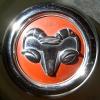-
Posts
6,978 -
Joined
-
Last visited
-
Days Won
74
Content Type
Links Directory
Profiles
Articles
Forums
Downloads
Store
Gallery
Blogs
Events
Everything posted by JBNeal
-
I thought I knew purty much everything about brakes, then I had to deal with an aging ABS on The QuadCab...kinda sounds like ya might have rubber components that have swollen from brake fluid contamination and multiple components are dragging, maybe hoses are constricting...there was one line in my shop manual that mentioned that complete component replacement is required for all components that have rubber internal parts when brake fluid has been contaminated, and that's what I had to do for calipers, hoses, MC, etc...it fixed that slow returning brake pedal after months of furcurking with it piecemeal
-
On the last set of guides that I installed, I eyeballed the guide depth with a mark I drew on each guide, checked the depth and drove to specs...if I overdrove a guide, I used a prybar to back the guides out carefully...all with the engine in the truck
-

Fuel Line on a B4B?
JBNeal replied to Eclector's topic in DPETCA - Dodge Pilothouse Era Truck Club of America
additional information - fuel line routing -
additional information - sender gasket
-

Vintage Air install in 46 Dodge PU
JBNeal replied to My 46 Babe's topic in Mopar Flathead Truck Forum
asking the same question 3 times in 48 hours is kinda frowned upon as poor forum etiquette...having patience is probably the most important thing required in doing any kind of restoration- 1 reply
-
- 1
-

-

51 B3B build thread - after all these years
JBNeal replied to bkahler's topic in Mopar Flathead Truck Forum
Some folks cover the contacts with dielectric grease to minimize future corrosion... -
Chrysler Turbine, with the powertrain that was briefly considered as an option for the original Charger
-
I tried to fix a couple of these and they fell all to pieces...bought several Roberts units over the years, and they would eventually fail with the same failure modes...so I opted to use the zinc plated flange from the Roberts unit to make Tod Fitch's modification using a Tanks Inc sending unit, complete with a ground stud for improved continuity...hasn't failed yet
-
my '49 spent many years as a feline sanctuary in The Panhandle before I dragged it home...haven't had a mouse problem for going on 20 years of being parked between a cornfield and a hay pasture...the others in the fleet have not fared so well ?
-
I have an old Lisle gasket scraper that I use, starting at a corner towards the main belt pulley, setting the edge flat on the flange and bopping the handle with my fist or a heavy ratchet handle...the thick gaskets that are set up into the block cavities have to be worked out carefully...a trick I learned was to put longer bolts at the 4 corners of the oil pan, upwards of 2" and only threaded in a bolt diameter, so that when the oil pan finally lets go, them longer bolts catch the pan...these longer bolts also can be used as pilots for oil pan installation and replaced with the correct bolts before final torque
-

51 B3B build thread - after all these years
JBNeal replied to bkahler's topic in Mopar Flathead Truck Forum
I recall reading a line in several older shop manuals that a drop of light engine oil is to be applied to all linkage pivots when changing engine oil... -
when I jacked up my cab, the rubber was stuck to the metal, but I only raised it by maybe 1/4", used a gasket scraper to separate the rubber from the metal...it was a slow going process, but I got it done without using too many creative german phrases nor doing any damage to the sheet metal.
-
To replace the cab mounts, I removed the bolt and lower rubber, lifted the cab enough to get the weight off of the upper washer, then grasped the spacer tube with some needle nosed vise grips to wiggle that tube out of the washer, as I assumed they were pressed together. Once it broke loose, I worked that tube out of the upper spacer. I used a trolley jack on the running boards, with a 1" thick plywood scrap under the jack and a 2x6 strategically placed under the cab, and lifted the cab just enough to extract the old rubber...new rubber was taller so I had to jack the cab up a little more to set it in its new location.
-
maybe that panel is wedged between the cab and fender from a pancaked cab mount...
-
additional information - bulb chart
-

Ready to Start the Engine Build (what am I missing)?
JBNeal replied to billrigsby's topic in Mopar Flathead Truck Forum
Don't forget about that timing chain oiler -

51 B3B build thread - after all these years
JBNeal replied to bkahler's topic in Mopar Flathead Truck Forum
I heard a rumor that ya might have a NOS floormat that might cover this whole area... -
Balance might depend on runout...might be too late to check, but comparing runout of the original pulleys to the modifications could give a baseline comparison...
-
moparpro has an eBay store that lists a reproduction that was released a few months ago...not sure of the quality but it is a direct replacement with a competitive price to having an existing tank Renu'd
-
There was a discussion years ago regarding this part of a PCV conversion, as some folks were adamant that the oil fill tube had to be perfectly sealed in order for that part of the circuit to work, based on what was done with the Power Wagons. I argued that perfect seal had to do with not allowing water to get into the crankcase when fording a small river, but this point fell onto deaf ears. The crankcase cap in question was the same replacement style as yours, and it had been sealed with a flat tin donut epoxied over the intake holes of the cap, but it only had the metal-to-metal seal of the cap over the fill tube. When I pointed out that was more of a severe restriction than a true watertight seal, it kinda set a few ppl off, but that's another story...bottom line was that as long as that fill cap allows for crankcase fumes to be drawn into the charge air stream instead of the engine compartment, then the "sealed" cap has served its purpose
-
Beefing up the HF engine stand to handle the flathead is about as much overkill as using all stainless steel hardware and grade 8 bolts on a Pilot-House. The flathead is pushing the limits of the HF stand, but that only means care must be taken when working with it, because they will want to tip over if you get in a hurry rolling it around. I looked at heavier stands, but those are for professionals who rebuild engines all day everyday, something I will not be doing. If I rebuild a dozen engines with this stand, I would be confident enough to use it each time. From my time designing aerial lifts, the worry that steel was flexing too much in certain situations was something that may have cost us a few sales over the years. Even though we never had one failure from overloading, our competitors would talk up about how flimsy our booms were. The reality was that we designed other components that would fail long before the main structure so that the mechanism would not operate in a weakened structural state, something that ANSI requires. Year after year, our aerial lifts were the lightest weight in the industry, while still being competitive in functionality and cost. The flexing of the HF stand only reminds me of this, as well as the not so great casters. Beefing up the HF stand with stronger casters and structural bracing might just put an excess load on the frame welds, causing the very failure that is trying to be avoided... HF is far from perfect, as many know...my first engine stand was exchanged for one with a little better quality
-
Most of late September and October was free of warning lights, so I thought I had turned a corner on this long journey of problem solving. In that time, I took 6 road trips in excess of 2 hrs each, having only taken 2 long trips the previous 8 months. Then we had a 3 day cold spell dipping into the 30s, the power steering pump groaned one afternoon, and the warning lights were back, on all the time. Occasionally, the steering wheel would grab at startup, and groaning became constant as the weather warmed back up. So I extracted the fluid from the power steering pump reservoir and it was dark, only able to see the amber fluid color at the perimeter of the clear plastic jar. I was stumped as to how dirty that fluid had gotten in less than 10k miles, since the entire power steering system had been replaced and flushed. So I replaced the extracted fluid with nearly a pint of Lucas Oil ps fluid with conditioners, which is about half of the ps system capacity. I figured that fluid swap was worth a try, as it only took 15 minutes, compared to another flushing extravaganza, which takes upwards of 4 hrs (including cleanup). Within a week, I had about 200 miles on that fluid, and as advertised, the pump stopped groaning, and the warning lights became more infrequent and random, not having illuminated in the last 50 miles. The proportional valve rubber cap is still dry, and no leaks on the brake lines or fittings, so it's looking more like the ABS problem has shifted from brake fluid contamination to power steering fluid contamination...whoduh thunk it
-

51 B3B build thread - after all these years
JBNeal replied to bkahler's topic in Mopar Flathead Truck Forum
additional information - floorboard bolt alternative additional information - floorboard mystery plate -
I can relate


